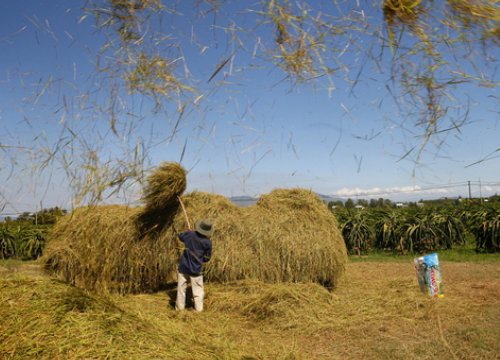
AsianScientist (Aug. 25, 2014) – By Naimul Haq – Bangladesh has begun a special drive to protect thousands of slash-and-burn cultivators from malaria and other mosquito-borne diseases.
“We have identified about 50,000 woodcutters and jhum (slash-and-burn) cultivators who are at increased risk of being infected by malaria and endangering their families,” Benazir Ahmed, chief of the country’s malaria control program, tells SciDev.Net.
Ahmed says the drive is focused on “orientation and training” for those at risk, mainly in the Chittagong Hill Tracts area.
“The idea is to build awareness among woodcutters and jhum cultivators and give them a sense of urgency.”
Slash-and-burn cultivation involves the cutting and burning of plants in forests or woodlands to cheaply prepare fields for subsistence farming, and is largely followed by tribal populations in Bangladesh and the adjacent Indian state of Tripura.
The special anti-malaria drive follows confirmation through a study by Bangladesh and US scientists that jhum cultivation is an independent risk factor for malaria infection and that it may play a role in community transmission of the disease.
According to the study, published online in May in the American Journal of Tropical Medicine and Hygiene, jhum cultivators and individuals who live near them have significantly higher incidence rates of symptomatic infection by Plasmodium falciparum, the malaria parasite, as compared with non-cultivators.
Wasif Ali Khan, lead author of the study and researcher at the International Centre for Diarrhoeal Disease Research, Bangladesh (icddr,b) tells SciDev.Net that jhum cultivators were “five time at risk of being infected by malaria than other people.”
The study by the Centre for Vaccine Sciences and the Centre for Population, Urbanisation and Climate Change of the icddr,b, in collaboration with the Johns Hopkins Malaria Research Institute, Baltimore, reports that jhum cultivators and people living with them had 1.6 times higher odds of being infected with malaria than non-jhum cultivators.
Possible mechanisms cited in the study for the observed higher malaria incidence among jhum cultivators include increased exposure to mosquitoes, sleeping away from home unprotected by bed nets and lack of access to health services.
Conducted between May 2010 and August 2012, the study covered 24,074 individuals in 4,766 households in the Bandarban district. According to government records, 22,413 hectares of land are under jhum cultivation in Bangladesh.
Ahmed says the government spends around US$12 million per year on measures to contain malaria such as by distributing mosquito repellent sprays and protective jackets to farmers.
The WHO estimates that worldwide malaria causes 300-500 million infections and over one million deaths each year.
The article can be found at: Galagan et al. (2014) The Practice of Jhum Cultivation and Its Relationship to Plasmodium falciparum Infection in the Chittagong Hill Districts of Bangladesh.
——
Source: SciDev.Net.
Disclaimer: This article does not necessarily reflect the views of AsianScientist or its staff.












